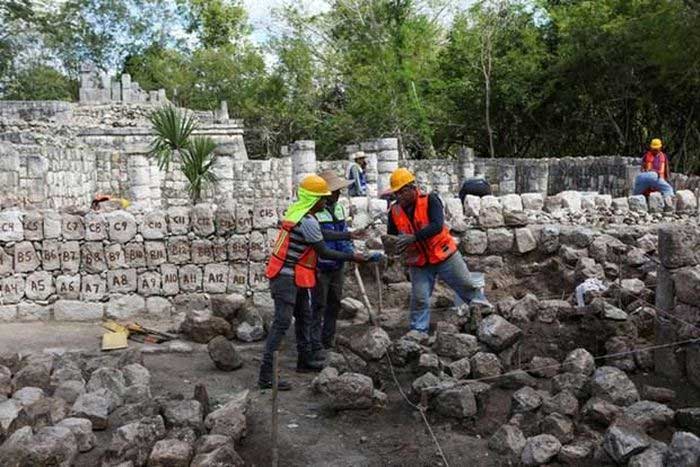According to archaeologist Francisco Perez Ruiz, Mexican scientists have discovered a site that proves the existence of communities that once inhabited the Chichen Itza area.
Mexican researchers recently uncovered a complex of ruins at the archaeological site of Chichen Itza, a prominent landmark of the ancient Maya civilization.

Mexican scientists at the archaeological site of Chichen Itza. (Source: Reuters).
Located on the Yucatan Peninsula bordering the Gulf of Mexico, this site is part of a residential complex built for the elite in the 5th century AD.
On February 13, the National Institute of Anthropology and History of Mexico (INAH) announced that the newly discovered complex includes a large gate and houses named by the Maya such as the Snail House, the House of the Moon, and the Palace of Phalluses.
Archaeologist Francisco Perez Ruiz stated that this is the first time Mexican scientists have found a site that demonstrates the existence of communities that lived in the Chichen Itza area.
Notably, the newly found site may have been the residence of a lord</strong) living with his family.
Adding to his colleague’s insights, archaeologist Jose Osorio Leon suggested that there are undoubtedly many other significant sites yet to be discovered in the area.
Continuing to explore peripheral areas will help modern individuals envision the lives of the ancient Maya in this sacred city.
|
INAH experts stated that the site named Chichen Viejo will be included in the tour itinerary for the Chichen Itza archaeological tourism zone – a UNESCO World Heritage site. Starting from 1988, the Chichen Itza site attracts approximately 2 million tourists annually, generating significant revenue for the Yucatan state located in southeastern Mexico. Just 190 km from Cancun – the iconic tourist beach, Chichen Itza is situated on one of Mexico’s most important travel routes. |


















































